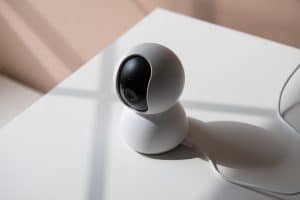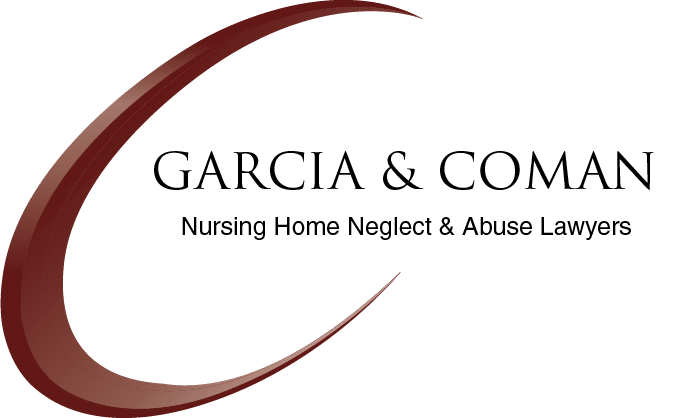The Role of Technology in Preventing Nursing Home Abuse
 Nursing home abuse is a significant and persistent issue affecting some of our most vulnerable members of society. With an aging population and increasing reliance on long-term care facilities, it’s important to ensure that elderly residents receive proper treatment. Unfortunately, many nursing home residents, especially those with physical or cognitive impairments, remain at risk of abuse and neglect. The nursing home abuse attorneys at Garcia & Coman have handled heartbreaking cases where elderly individuals have suffered in silence due to the lack of oversight and accountability in some nursing homes. However, advancements in technology are offering new ways to monitor and prevent abuse, providing families with greater peace of mind.
Nursing home abuse is a significant and persistent issue affecting some of our most vulnerable members of society. With an aging population and increasing reliance on long-term care facilities, it’s important to ensure that elderly residents receive proper treatment. Unfortunately, many nursing home residents, especially those with physical or cognitive impairments, remain at risk of abuse and neglect. The nursing home abuse attorneys at Garcia & Coman have handled heartbreaking cases where elderly individuals have suffered in silence due to the lack of oversight and accountability in some nursing homes. However, advancements in technology are offering new ways to monitor and prevent abuse, providing families with greater peace of mind.
How technology can address nursing home abuse
The use of technology in nursing homes is becoming increasingly prevalent, with a growing number of tools designed to improve patient care and reduce the risk of abuse or neglect. These technological advancements provide an extra layer of protection, making it easier to detect issues before they escalate. Here are some key technologies currently playing a role in preventing nursing home abuse:
Surveillance cameras: Video surveillance is one of the most effective ways to deter abuse. Cameras in common areas, such as hallways and dining rooms, can monitor staff-resident interactions and provide evidence in cases of suspected abuse. While privacy laws restrict their use in personal spaces like bedrooms or bathrooms, surveillance footage can be critical in proving cases of physical or verbal abuse that would otherwise go unnoticed.
Wearable technology for residents: Devices like smartwatches and medical alert systems allow for real-time monitoring of residents’ health and safety. These technologies track vital signs, movement, and location, which can alert caregivers or family members to sudden changes, such as a fall or wandering. This immediate notification can prevent injuries or other neglectful situations that might otherwise go unnoticed for extended periods.
Electronic health records (EHRs) and automated reporting: EHRs help streamline resident care by maintaining a digital record of their medical history, treatment plans, and daily care activities. These records improve communication between staff and ensure that no essential steps are overlooked. Automated reporting features in EHRs can flag potential issues like missed medications or unexplained weight loss, which may indicate neglect.
Remote monitoring systems: Remote monitoring systems use sensors to track residents’ well-being, offering an additional layer of oversight without constant in-person supervision. These systems monitor factors such as room temperature and resident movement. For instance, if a resident with mobility issues remains inactive for too long, the system can alert staff, reducing the risk of neglect.
Artificial intelligence (AI) and predictive analytics: AI and predictive analytics are transforming the way nursing homes prevent abuse and neglect. By analyzing data from EHRs, sensors, and other monitoring tools, AI can predict which residents may be at higher risk of mistreatment based on their health conditions or behavioral changes.
Predictive analytics can also flag potential staffing issues, such as overworked caregivers or high turnover rates – often linked to a higher incidence of neglect. This technology allows nursing homes to take a proactive approach to addressing potential risks before abuse occurs, improving the overall safety and quality of care.
What are the challenges and legal considerations in using technology in nursing homes?
While technology offers significant promise in preventing nursing home abuse, there are challenges and legal issues that families and nursing homes must navigate.
Privacy concerns: One of the main challenges in implementing surveillance technology in nursing homes is balancing the need for oversight with residents’ right to privacy. For example, while cameras in common areas can help deter abuse, using them in private spaces, such as bedrooms or bathrooms, can be seen as an invasion of privacy. Federal and state laws often limit the use of surveillance in these areas to protect residents’ dignity.
If you are considering using surveillance technology to monitor your loved one, it’s essential to understand the legal requirements in your state. Some states require the consent of the resident or their legal guardian before cameras can be installed in a private room. Our nursing home abuse attorneys can help guide you through these legal considerations to ensure that your loved one’s rights are protected.
Staff resistance: Caregivers may resist being constantly monitored by surveillance or sensor technology, fearing it creates an atmosphere of mistrust. While the goal is to protect residents, there’s a potential for conflict between staff and management over these technologies.
Cost of technology: Implementing advanced technology in nursing homes can be costly, and some facilities may be hesitant to invest in these systems. Smaller or underfunded nursing homes may lack the financial resources to adopt the latest monitoring tools, which can leave residents more vulnerable to abuse and neglect.
Families can play a role in advocating for the use of technology by choosing facilities that prioritize resident safety and by pushing for regulatory changes that require nursing homes to invest in protective measures.
Technology failure or misuse: Even the most sophisticated technology can fail or be misused. For example, wearable devices may malfunction, or staff may ignore alerts from monitoring systems. In some cases, surveillance footage could be tampered with to hide abuse. Technology should be used as part of a broader strategy that includes vigilant human oversight.
How can I protect my loved one?
While technology plays a critical role in preventing nursing home abuse, families must remain actively involved in their loved one’s care. Here are some steps you can take to ensure that your loved one is safe:
- Research nursing homes thoroughly: Before choosing a nursing home, research the facility’s reputation, read reviews, and ask about the technology they use to protect residents. A facility that invests in surveillance, remote monitoring, and communication tools is likely more committed to preventing abuse.
- Stay involved in your loved one’s care: Regular visits and communication with nursing home staff are essential to ensuring your loved one receives the care they deserve. Use any available communication apps to stay informed, and voice concerns promptly if you notice any signs of neglect.
- Consider legal action if abuse occurs: If you suspect that your loved one has been abused or neglected, don’t wait to take action. Technology, such as surveillance footage and electronic health records, can be vital in building a case against the nursing home. Our experienced nursing home abuse attorneys can help you gather evidence, file complaints, and pursue justice for your loved one.
If you believe your loved one may be suffering from abuse or neglect in a nursing home, don’t hesitate to act. Technology can help uncover the truth, but legal action is often necessary to hold facilities accountable. Contact the experienced nursing home abuse attorneys at Garcia & Coman for a free consultation. Let us help you protect your loved one’s rights and ensure they receive the care and dignity they deserve. Call our nursing home lawyers or fill out our contact form to schedule a free consultation today. As a national firm, our offices are in Los Angeles, Phoenix, Long Beach, Louisville, and New Orleans.

Stephen M. Garcia represents victims of elder and nursing home abuse and is known as one of the leading civil litigators in the country. He is Senior Partner at Garcia & Coman, where the firm’s practice is focused on elder abuse, nursing home abuse, and wrongful death of the elderly.
Find out more about Stephen M. Garcia

